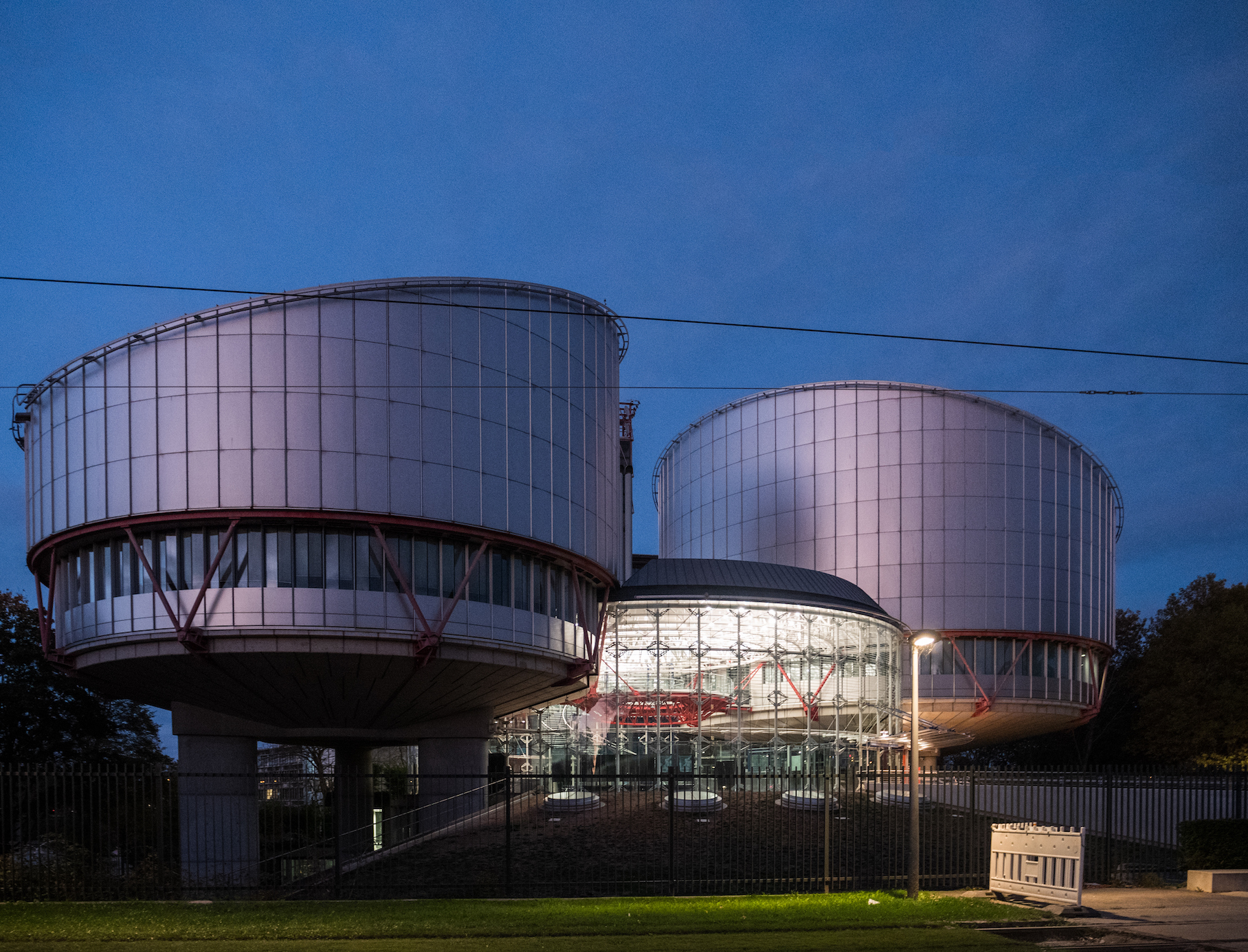What is cancer?
Cancer is any malignant growth or tumour caused by abnormal and uncontrolled cell division.
It is widely believed that damaged DNA and genes are the ‘driving force’ behind the development of cancer and they are therefore the focus of cancer research.
Unlike in healthy cells, damaged DNA is not capable of repair in cancerous cells.

Men in a laboratory microscope with microscope slide in hand.
People can inherit damaged DNA, which accounts for many cancers. A person’s DNA may also become damaged by exposure to environmental factors, such as through smoke inhalation. Cancer cells travel around the body and begin to attack healthy tissue in a process called metastasis. This occurs when the cancer cells get into the bloodstream or lymph vessels of the body.


‘Benign’ tumours develop through the same process, but do not spread to other parts of the body (metastatize) and, with very rare exceptions, are not life-threatening.
There are over 200 different types of cancer that can occur anywhere in the body; the most frequently occurring are lung, breast and bowel cancer.
History of Cancer Research
Cancer has long been globally recognised as a deadly disease. It has therefore historically attracted the attentions of the world’s leading physicians.
However, it was not until the 20th century that scientists were able to provide real solutions to the complex questions of biology and chemistry involved in cancer.
Previously, scientists were aware that cancer could be caused by an assortment of factors, including chemicals, radiation, and viruses, and that susceptibility to cancer may be inherited, but understanding remained limited.
In the early 20th century, surgery remained the only method for effectively dealing with cancer, but this was only effective on small and localised cancers that could be completely removed.
Radiation techniques were subsequently developed for use after surgery to control small tumour growths. Chemotherapy (drug treatment) was developed to destroy small tumour growths that were not treatable by other methods.
A major breakthrough in the treatment of cancer was the use of multiple chemotherapeutic agents (known as combination chemotherapy) over single agents.
Another milestone occurred in 1953 with the pioneering work into the structure of DNA by British scientists James Watson and Francis Crick. This work helped improve understanding of the nature of DNA and it’s centrality to the cancerous disease process.
The knowledge provided by molecular biology and genetics is today helping to inform research on cures for cancer, and although a ‘miracle cure’ has yet to be found, there have been vast improvements in understanding cancer over the last decade.
Research commissioned in 2001 by the Medical Research Council covered a broad area, including basic cell and molecular biology research in humans and ‘lower organisms’ such as yeast and fruit flies. These organisms may also be used to research the effect of cancer causing agents on DNA.
More sophisticated and complex studies include using genetics and epidemiology to identify inherited and environmental factors and to research how they interact and contribute to cancer.
In September 2000, the Government published the NHS Cancer Plan, the first attempt to create a comprehensive strategy for NHS cancer services. And in December 2007 the Department of Health launched the Cancer Reform Strategy which set a clear direction for the development of cancer services in England over the following five years.
Information on what research is being conducted in the UK is available from the National Cancer Research Institute, which in 2002 set up a Cancer Research Database (CRD) providing information on different areas of cancer research.
In its Strategic Plan 2008 – 2013, NCRI stated that over the next five years it would like to promote research in the following areas in particular: Better prevention leading to a lower cancer risk for each individual; Earlier diagnosis so that cancer is more often identified at a stage when it can be treated effectively; Better, cost-effective treatments for patients; Less inequality in outcomes for patients; and improvements to the health and quality of life for people who survive cancer, and more people cured of their cancers.
One area of cancer research attracting great interest is that involving stem cells. In January 2011 Cancer Research UK and its commercial arm Cancer Research Technology (CRT) announced it had selected four world-class research groups with expertise in cancer stem cell research to take part in an initial two year project “to unravel the role of cancer stem cells in the development, growth and spread of tumours in breast, prostate and head and neck cancers.”
In January 2011, scientists from Cardiff University’s School of Medicine reported that they had developed a unique view of human DNA which could offer a valuable insight into the development and treatment of conditions like cancer.
This unique method of measuring DNA damage frequency, using tiny microarrays of greater than gene resolution, means the scientists can now examine all 28,000 human genes whereas previous techniques have only been able to analyse parts of about five human genes. The new patented technique is said to offer “an unprecedented view” of DNA damage in humans caused by cancer and cancer treatments, like chemotherapy.
Past Controversies
The National Cancer Research Institute’s 2002 publication of a breakdown of research figures in the UK created controversy about the way that funds were being distributed between diseases.
In particular, it revealed that research into lung cancer received only three per cent of the available funding in the UK despite accounting for 22 per cent of the total deaths from cancer in 2000. On the other hand, leukaemia received almost 18 per cent of the total funding, yet only accounted for approximately three per cent of deaths in 2002.
NCRI published a report in 2006 exploring why the investment in lung cancer research was much lower than for other tumours in relation to both incidence and mortality and a number of actions to facilitate lung cancer research were initiated as a result. According to NCRI there is now some indication that the report itself has helped to raise awareness of the issues among research funders, resulting in more discussion of opportunities in lung cancer research amongst both funders and scientists.
Vivisection and the use of animals in cancer research, as in other research, continues to be a particularly controversial topic.
Statistics
Every day nearly 990 people are diagnosed with cancer, and around 450 people die from the
disease – Calculated by the Cancer Intelligence Team at Cancer Research UK: based on all cancers
combined excluding non-malignant melanoma in the UK in 2016
In 2017/18 Cancer Research UK generated an income of £634 million. Of this £192 million was from donations, £182 million from legacies, £104 million from shop and event sales, £101 million from royalties and grants, and £49 million from events. [Source – Cancer Research UK – Accounts]
In 2019/20, we spent £455m on ongoing research activity, including projects started in previous years. This was broken down into: £203m on research into specific cancers; £86m on research into cancer’s fundamental biology; £81m on research relevant to all cancers, including our network of centres and clinical trials units; £43m passed on to other research organisations, as their share of the royalties we received from sales of innovations developed from previous research; and £42m on research administration and support, including the systems and processes that allow us to fund world-class research. [Source – Cancer Research UK – Accounts]
Quotes
“In the 1970s, only 1 in 4 cancer patients would survive their disease for ten years or
more. By 2010, this had risen to 2 in 4, and survival continues to improve today. This is due to
groundbreaking research, innovative new treatments, and the tireless efforts of staff right across
the NHS” – Cancer Research, 2019.
“This is really an exciting development, as it enables us – for the first time – to examine DNA damage in the entire human genome in all of its genes. “This is especially useful if we examine the damage to people’s DNA of those with cancer. By examining damage we can understand the causes of cancer as well as help develop ways of treating it.” – Professor Ray Waters, Cardiff University School of Medicine, who together with Dr Simon Reed and Dr Yumin Teng developed a unique method of measuring DNA damage frequency – January 2011
“Cancer stem cells offer the potential to transform the way we tackle disease. There is evidence that they play a key role in the creation and growth of tumours, and the way they spread around the body. If this is correct, it may be possible to treat cancer more effectively by concentrating on the stem cells alone, rather than all the cells in the tumour, as current treatments do.” – Cancer Stem Cell Research Institute, Cardiff University – 2011


























